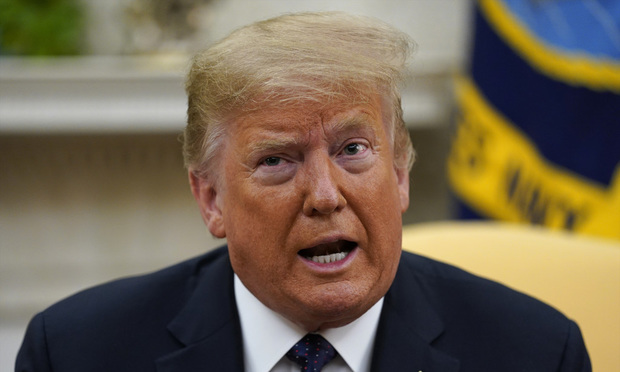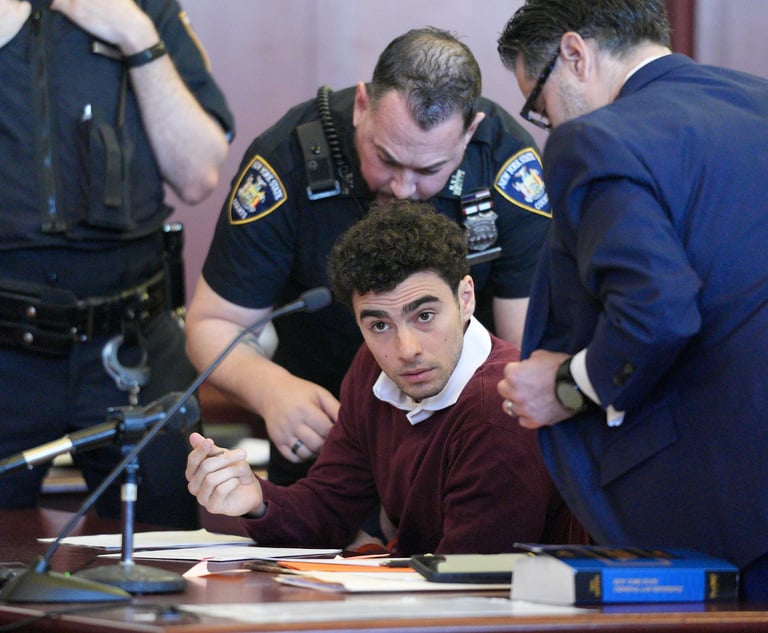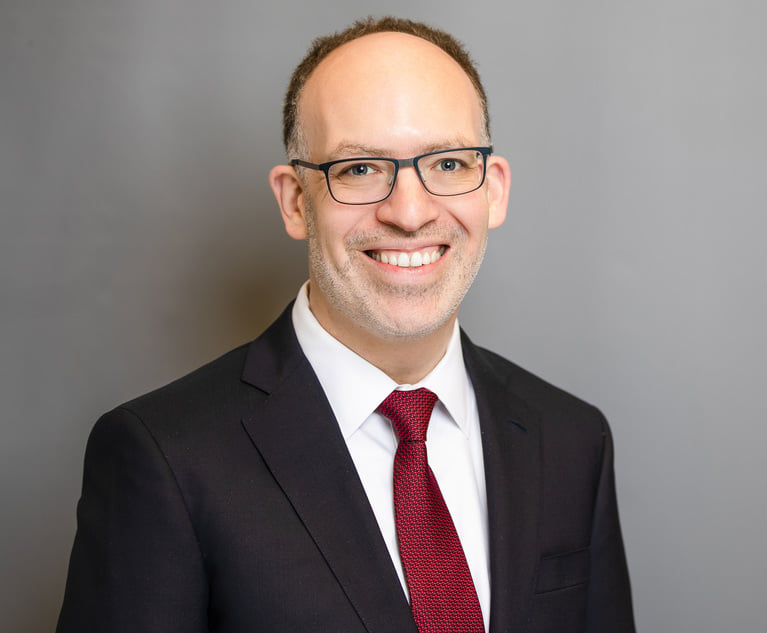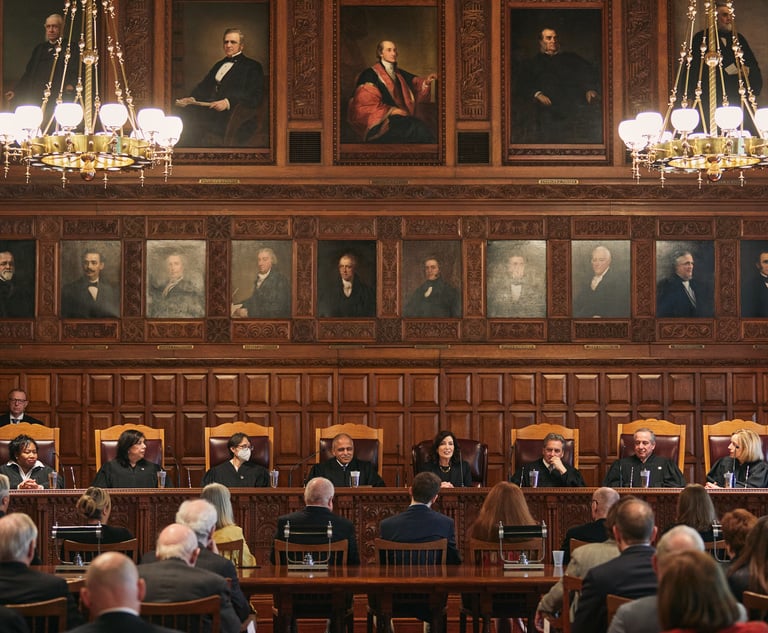All Too Real: The President and Death Penalty Politics
Until the 2020 election cycle—when the President's strategy seems to be to create a phony panic about violent crime—the federal death penalty did not seem to be a high priority. Suddenly, it is an emergency.
July 24, 2020 at 10:10 AM
5 minute read
 President Donald Trump. AP Photo: Evan Vucci
President Donald Trump. AP Photo: Evan Vucci
Donald Trump has proclaimed himself the "Law and Order President" and William Barr is presumably his "Law and Order" sidekick of an Attorney General. They apply the law to drop felony charges against Michael Flynn, after Flynn pleaded guilty twice to lying about his conversations with the Russian Ambassador. They apply the law to withdraw the Department of Justice's sentencing recommendation with respect to Roger Stone's seven felony convictions for lying to Congress and threatening witnesses. Then the President commutes Stone's sentence days before it was to be served. Trump and Barr apply the law to fire neutral prosecutors who appear to be investigating the President's friends and business partners; and then the Attorney General tells the bald-faced lie that the prosecutor had resigned. They apply the order to teargas peaceful protesters away from the White House so that the President can stage a photo-op with a Bible. Law and order are convenient tools to help the President's political friends (or those who have dirt on him) and to hurt his enemies.
This is a squalid enough spectacle, but at least no one died. Until this week, when Attorney General Barr took time out from his busy schedule to press for the execution of two inmates on federal death row. No federal prisoner had been executed for more than seventeen years. And until the 2020 election cycle—when the President's strategy seems to be to create a phony panic about violent crime—the federal death penalty did not seem to be a high priority. Suddenly, it is an emergency. Two men were executed in the middle of the night, right out of the playback of the Soviet prisons of yesteryear or the torture prisons of Egypt. A third is scheduled to die later this week.
Daniel Lewis Lee was abused as a child, suffered from serious mental health problems and spent much of his childhood in juvenile detention centers. He was recruited by a charismatic white supremacist, Chevie Kehoe, to join his militia, where Lee was described as a subordinate "faithful dog" to the evil alpha Kehoe. Kehoe brought along Lee to participate in the robbery and murder of three members of a family, which Kehoe had planned, initiated and executed. Kehoe got life in prison, but the federal government insisted on seeking the death penalty for Lee. The federal prosecutor remains haunted by the "inexplicable randomness" of the result and the Nixon-appointed judge who oversaw the trial wrote to Attorney General Holder that he was left "with the firm conviction that justice was not served" in the imposition of the death sentence. The victims' family members also opposed a death sentence. One victim's mother said "The government ain't doing this for me, 'cause I would say no."
A district court judge imposed a stay to allow Lee to challenge the constitutionality of the lethal chemical execution protocol. The Court of Appeals affirmed the stay on Monday. In the middle of the night on Tuesday, by a 5-4 vote, the Supreme Court dissolved the stay and permitted the execution to go forward. Lee was executed at 8 in the morning on Tuesday, after being strapped to a gurney for four hours. Contradicting the prosecutor, the trial judge and the victims' family, Barr declared that Lee "finally faced the justice he deserved."
Two days later, the same dance of death was enacted for Wesley Purkey. The same judge issued a stay of execution on the basis that Purkey suffered from progressive dementia, schizophrenia and severe mental illness, and the court needed to evaluate whether he was competent to even understand what was about to happen to him. Once again, the Supreme Court, by 5-4 in the dead of night, ordered the execution to go forward and Purkey was executed on Thursday morning. Once again, the Department of Justice declared that a defendant "finally faced justice." Of course, someone with dementia and psychosis is unable to face justice; he was just a disabled old man passively being injected with lethal chemicals.
In the midst of a pandemic, an economic crisis, and a criminal justice crisis, why was it a priority for President Trump and Attorney General Barr, aided by Trump's two conservative Supreme Court appointees to make sure in the middle of the night that these men died on an emergency basis? After more than two decades, what was the hurry now? Why were the issues that they raised, which were significant enough to convince lower court judges to order stays, simply brushed aside by the Supreme Court in unsigned order?
The answer is simple: this is the Law and Order President. He is running on American carnage. The symbolism of the death penalty is powerful, even if has no discernible impact on crime. This is not criminal justice. It is reality-show criminal justice, like so much else in the Trump presidency. But in the Trump-Barr reality show, real people die to serve as yet another prop in the Trump-Barr election year narrative of distraction, where the illusion of law and order disguises a crisis of lawlessness.
Eric Lewis is a senior partner at Lewis Baach Kaufmann Middlemiss PLLC and practices in the areas of international litigation and arbitration, serious fraud, banking, international insolvency and complex securities litigation. Eric is based in Washington DC and New York City.
This content has been archived. It is available through our partners, LexisNexis® and Bloomberg Law.
To view this content, please continue to their sites.
Not a Lexis Subscriber?
Subscribe Now
Not a Bloomberg Law Subscriber?
Subscribe Now
NOT FOR REPRINT
© 2025 ALM Global, LLC, All Rights Reserved. Request academic re-use from www.copyright.com. All other uses, submit a request to [email protected]. For more information visit Asset & Logo Licensing.
You Might Like
View All

The Power of Student Prior Knowledge in Legal Education
Law Firms Mentioned
Trending Stories
- 1'It's Not Going to Be Pretty': PayPal, Capital One Face Novel Class Actions Over 'Poaching' Commissions Owed Influencers
- 211th Circuit Rejects Trump's Emergency Request as DOJ Prepares to Release Special Counsel's Final Report
- 3Supreme Court Takes Up Challenge to ACA Task Force
- 4'Tragedy of Unspeakable Proportions:' Could Edison, DWP, Face Lawsuits Over LA Wildfires?
- 5Meta Pulls Plug on DEI Programs
Who Got The Work
Michael G. Bongiorno, Andrew Scott Dulberg and Elizabeth E. Driscoll from Wilmer Cutler Pickering Hale and Dorr have stepped in to represent Symbotic Inc., an A.I.-enabled technology platform that focuses on increasing supply chain efficiency, and other defendants in a pending shareholder derivative lawsuit. The case, filed Oct. 2 in Massachusetts District Court by the Brown Law Firm on behalf of Stephen Austen, accuses certain officers and directors of misleading investors in regard to Symbotic's potential for margin growth by failing to disclose that the company was not equipped to timely deploy its systems or manage expenses through project delays. The case, assigned to U.S. District Judge Nathaniel M. Gorton, is 1:24-cv-12522, Austen v. Cohen et al.
Who Got The Work
Edmund Polubinski and Marie Killmond of Davis Polk & Wardwell have entered appearances for data platform software development company MongoDB and other defendants in a pending shareholder derivative lawsuit. The action, filed Oct. 7 in New York Southern District Court by the Brown Law Firm, accuses the company's directors and/or officers of falsely expressing confidence in the company’s restructuring of its sales incentive plan and downplaying the severity of decreases in its upfront commitments. The case is 1:24-cv-07594, Roy v. Ittycheria et al.
Who Got The Work
Amy O. Bruchs and Kurt F. Ellison of Michael Best & Friedrich have entered appearances for Epic Systems Corp. in a pending employment discrimination lawsuit. The suit was filed Sept. 7 in Wisconsin Western District Court by Levine Eisberner LLC and Siri & Glimstad on behalf of a project manager who claims that he was wrongfully terminated after applying for a religious exemption to the defendant's COVID-19 vaccine mandate. The case, assigned to U.S. Magistrate Judge Anita Marie Boor, is 3:24-cv-00630, Secker, Nathan v. Epic Systems Corporation.
Who Got The Work
David X. Sullivan, Thomas J. Finn and Gregory A. Hall from McCarter & English have entered appearances for Sunrun Installation Services in a pending civil rights lawsuit. The complaint was filed Sept. 4 in Connecticut District Court by attorney Robert M. Berke on behalf of former employee George Edward Steins, who was arrested and charged with employing an unregistered home improvement salesperson. The complaint alleges that had Sunrun informed the Connecticut Department of Consumer Protection that the plaintiff's employment had ended in 2017 and that he no longer held Sunrun's home improvement contractor license, he would not have been hit with charges, which were dismissed in May 2024. The case, assigned to U.S. District Judge Jeffrey A. Meyer, is 3:24-cv-01423, Steins v. Sunrun, Inc. et al.
Who Got The Work
Greenberg Traurig shareholder Joshua L. Raskin has entered an appearance for boohoo.com UK Ltd. in a pending patent infringement lawsuit. The suit, filed Sept. 3 in Texas Eastern District Court by Rozier Hardt McDonough on behalf of Alto Dynamics, asserts five patents related to an online shopping platform. The case, assigned to U.S. District Judge Rodney Gilstrap, is 2:24-cv-00719, Alto Dynamics, LLC v. boohoo.com UK Limited.
Featured Firms
Law Offices of Gary Martin Hays & Associates, P.C.
(470) 294-1674
Law Offices of Mark E. Salomone
(857) 444-6468
Smith & Hassler
(713) 739-1250








